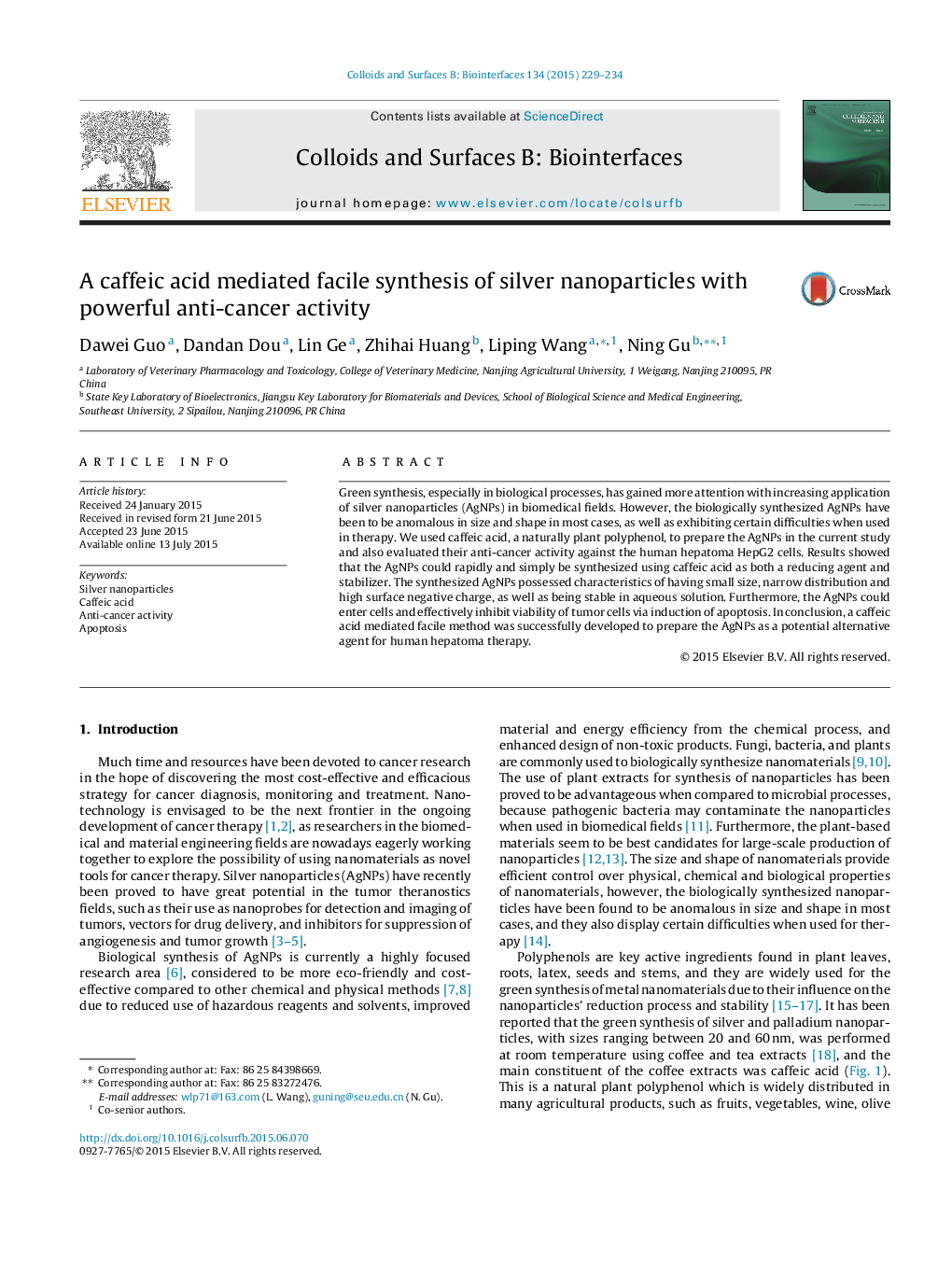| Article ID | Journal | Published Year | Pages | File Type |
|---|---|---|---|---|
| 599380 | Colloids and Surfaces B: Biointerfaces | 2015 | 6 Pages |
•Silver nanoparticles (AgNPs) were synthesized using caffeic acid as reducing agent and stabilizer.•AgNPs with uniform size are stably in the colloidal solution.•AgNPs could enter cells via endocytosis, localize in endosomes and induce cytotoxicity toward human hepatoma HepG2 cells in a dose-dependent manner.•Apoptosis mediated cell death induced by AgNPs.
Green synthesis, especially in biological processes, has gained more attention with increasing application of silver nanoparticles (AgNPs) in biomedical fields. However, the biologically synthesized AgNPs have been to be anomalous in size and shape in most cases, as well as exhibiting certain difficulties when used in therapy. We used caffeic acid, a naturally plant polyphenol, to prepare the AgNPs in the current study and also evaluated their anti-cancer activity against the human hepatoma HepG2 cells. Results showed that the AgNPs could rapidly and simply be synthesized using caffeic acid as both a reducing agent and stabilizer. The synthesized AgNPs possessed characteristics of having small size, narrow distribution and high surface negative charge, as well as being stable in aqueous solution. Furthermore, the AgNPs could enter cells and effectively inhibit viability of tumor cells via induction of apoptosis. In conclusion, a caffeic acid mediated facile method was successfully developed to prepare the AgNPs as a potential alternative agent for human hepatoma therapy.
Graphical abstractFigure optionsDownload full-size imageDownload as PowerPoint slide
